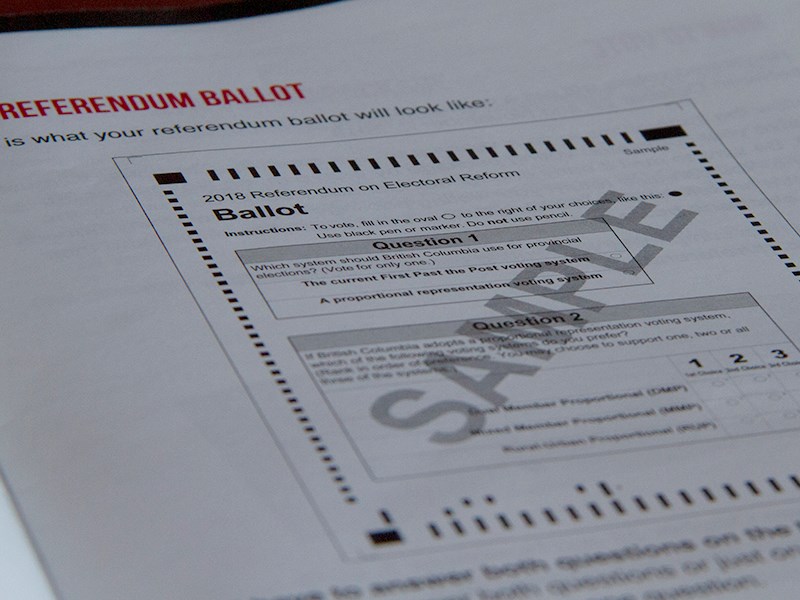British Columbians will decide through a mailed ballot whether the province should keep its current first-past-the-post voting system, or switch to one of three proportional representation voting systems, during a voting period between October 22 and November 20.
If they wish, voters who choose to keep the current voting system can leave the second section on the ballot paper blank: their votes will still be counted. However, all voters, regardless of whether they want to keep first-past-the-post or switch to a proportional system, can rank their preferred proportional voting systems: Dual Member Proportional, Mixed Member Proportional and Rural-Urban Proportional.
This series of three articles examines how these systems work, and the pros and cons of each. Last week's article focused on the mixed-member system. This week’s looks at the rural-urban option.
Rural-urban Proportional (RUP) is a mix of mixed-member proportional (MMP), and a system called “single transferable vote (STV),” in which voters rank the candidates on the ballot in order of preference.
Voters in more densely populated urban and semi-urban districts (like Metro Vancouver) would vote using the STV system to elect multiple MLAs.
Under STV, parties can run multiple candidates (up to the number of seats in the district). Voters in STV districts would rank their preferred candidates on the ballot, and would be allowed to rank as many of the candidates as they wish.
Once the votes are cast, several rounds of counting are normally required.
Each STV district would have a minimum number of votes, called a “quota,” required for a candidate to win a seat in the district. Each district would have its own quota according to the number seats up for grabs and the number votes in the district.
Any candidate who wins the quota gets elected. If a candidate wins more votes than the quota, then their extra votes get transferred to other candidates according to the voters’ next choices.
Candidates with the fewest votes get eliminated, and have their votes transferred to other candidates according to the voters’ next choices.
This process continues until all of the seats are won.
Meanwhile, rural districts would elect MLAs using the mixed-member proportional system (presented last week).
According to Elections BC, the provincial results under RUP would likely be proportional to the province-wide share of the vote that each party receives.
Under RUP, BC would have between 87 and 95 MLAs. Urban and semi-urban areas would have multiple MLAs, while rural areas would each have one district MLA and multiple regional MLAs, as per MMP.
Although the rural-urban system is not currently used anywhere in the world, several countries use either MMP or STV. Germany, New Zealand, and Scotland use MMP, while Ireland, Australia and Malta all use STV.
People who favour RUP over other forms of proportional representation argue that this system is best suited to represent the significant regional differences and varying population densities within BC. Proponents say this system would allow rural voters to retain a single local MLA, while also introducing regional MLAs who would offer a balance of different voices across the region.
However, opponents argue that there are some vagaries surrounding the RUP system. What counts as “semi-urban?” How many MLAs would urban and semi-urban districts get?
Other opponents argue that having different voting systems for different districts would be too complicated.
More information about all three of the proportional voting systems can be found on the Elections BC website.



